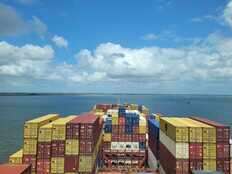- Port of Antwerp-Bruges handled 202.6 million tonnes of goods in the first nine months of 2025, a 3.8% decrease.
- Container throughput declined 2.4% in Q3, with a 1.1% tonnage rise over nine months.
- Liquid bulk fell 13.5% due to weaker petroleum exports and European chemical sector issues.
- Dry bulk dropped 8.9%, impacted by weaker fertilizer shipments.

Overall Performance
In the first nine months of 2025, the Port of Antwerp-Bruges handled 202.6 million tonnes of maritime goods, marking a 3.8% decrease compared to the same period last year. General cargo throughput, including containers, conventional cargo, and RoRo, rose by 1.3%, while dry and liquid bulk declined by 12.8%.
Container Traffic
Container throughput saw a 2.4% decline in the third quarter year-on-year, with a modest 1.1% growth in tonnage over nine months. The slowdown is attributed to the normalization of shipping alliances, reducing congestion and improving hinterland traffic.
Bulk and RoRo Segments
Liquid bulk fell by 13.5%, affected by weaker petroleum derivative exports and challenges in the European chemical sector. Dry bulk decreased by 8.9%, primarily due to weaker fertilizer shipments. The RoRo segment grew by 3.3%, driven by increased imports of new cars from China and higher volumes of trucks and used vehicles.
Impact of US Trade Measures
Trade with the US, the port's second-largest partner, grew by 15% in the first nine months, led by containers and liquid bulk. However, US import tariffs have impacted exports, particularly steel, which fell by over a third in the third quarter compared to the second quarter. Imports remained stable, supported by a rise in liquid bulk and LNG volumes.
Market Challenges
The port's performance reflects a balance between resilience and uncertainty, with stabilizing container flows and easing terminal pressure, but declining exports and challenges in the European chemical sector highlight sensitivity to geopolitical and economic fluctuations.

